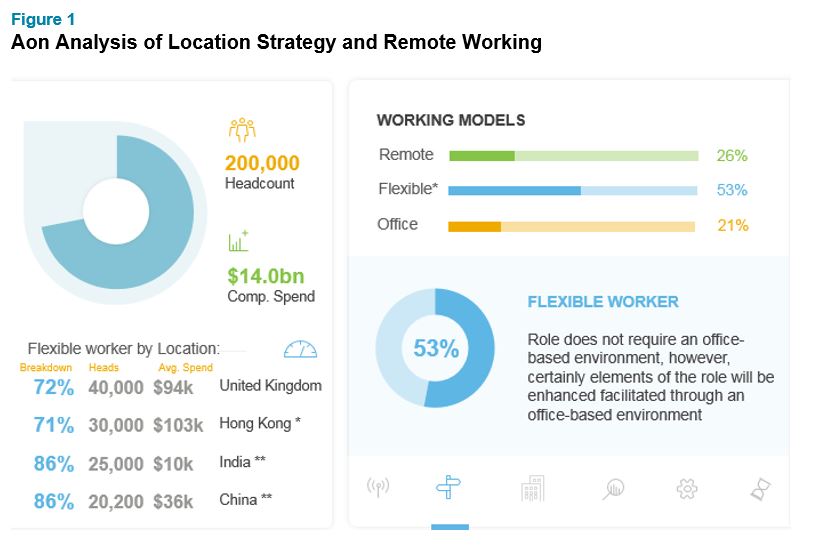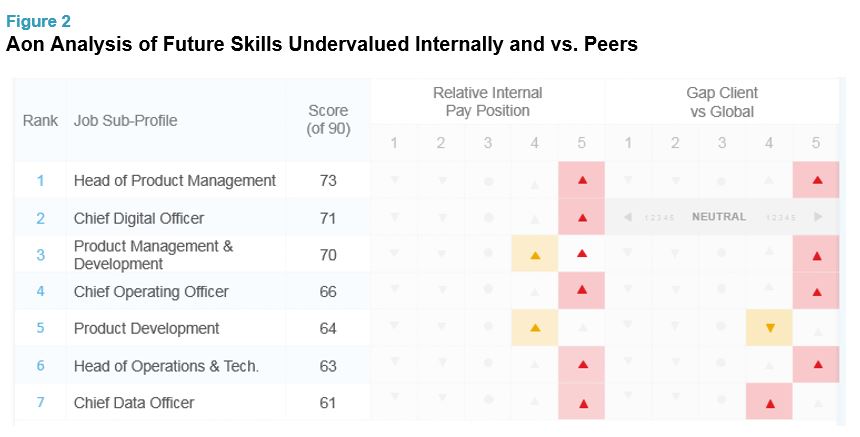When companies have traditionally considered cost-cutting measures, it has usually resulted in more blunt actions like headcount reduction. The future of work is pushing leaders to consider different ways of optimizing their workforce that can also save money in the long run.
Rightsizing the workforce following a period of economic and business uncertainty is likely to conjure thoughts of traditional cost-cutting measures like layoffs. But ensuring a firm’s workforce is optimized presents enormous opportunities for leaders to think beyond short-term cost savings and how to take advantage of new ways of working.
Let’s take an example of a cost-cutting approach to headcount for a public company that has just experienced the threat of a ratings downgrade. When a ratings agency tells a company its financial performance presents a risk and threatens to downgrade, the impact is significant: The firm’s debt becomes more expensive and it is harder to raise capital. The warning of a downgrade often elicits swift and severe action from business leaders to cut costs through headcount reduction. Consider that people within a service sector company usually account for around 70% of the cost base. The implications of such quick action may be a temporary boost in the stock value and preventing a downgrade in the short term. In the long term, though, innovation, morale and reputation will likely have taken a hit.
We should note that in certain circumstances, headcount reduction is a necessary reaction to operational and market conditions. In this article, however, we suggest alternatives to the sometimes knee-jerk reaction companies make when they feel an urgency to cut costs. In a post-COVID-19 world, organizations have a unique opportunity to reimagine the ways they can manage their people-related costs while optimizing their workforce.
How Did Banks Cut Costs Following the 2008-09 Recession?
Cost cutting through headcount isn’t always a one-way street. If we look at the banking sector between 2013 and 2018, when many banks were still recovering from the global recession in 2008-09, these institutions were optimizing their workforce while still cutting costs. We analyzed a small cohort of seven global banks and found a substantial reduction in workforce as firms cut costs aligned to the market conditions. In this case, rightsizing can lead to benefits for firms that have numerous levers to pull.
It is worth noting that while there was a 15% reduction in headcount from the revenue-producing parts of the banks we studied (normally the expensive parts of the business), the mix of reducing in one area was also balanced with increases in specific capabilities. In particular, the banks we studied invested in more data-driven, quantitative-based roles. While there was a net reduction of 90,000 heads across the seven banks, there was also an increase of 60,000 heads in low- to mid-cost locations across the same period.
Alternative Cost-Cutting Measures
The following actions can be taken separately or in combination to achieve similar cost savings as headcount reduction but through methods that don’t always have a negative impact on employee value, morale, reputation and long-term growth strategies. Nonetheless, each approach does carry some risks that we highlight below.
Location strategy: There are many areas of location strategy to consider, including offshoring, nearshoring and redeploying talent as well as determining permanent remote working programs for certain groups. (See Figure 1 for a snapshot of Aon’s location strategy analysis that we conduct for clients determining new strategies for locating talent.) This may also provide opportunities to enhanced access to talent pools and skillsets, and provide flexible capacity for organizations.
- Risks includes high inflation, quality control and duplication of costs.
Operating Models: Consider shared service models and outsourcing to make the workforce more flexible. You can centralize costs, gain leverage across repeatable processes and potentially access innovative outsourced capability to help accelerate digital transformation.
- Risks include quality control, loss of business or product specialization and the reality that shared service infrastructure groups by nature tend to be more focused on maintenance versus innovation.
Organizational design: Create efficiency through grade alignment within the organization, including making some roles more junior or removing duplication of roles by understanding the spans and layers of staff. This can create a more nimble and agile people structure.
- Risks include damaging the employee value proposition, quality control and control of intellectual property.
Non-compensation optimization: This involves cutting the costs of service providers, travel and entertainment. It’s the law of small numbers and because its normally the first course of action for many firms, it’s very hard to find much excess costs to cut from this area. However, it can also drive greater accountability and encourage a “value for money” mindset.
- Risks include having the right tools and information to do the job, access to the right advice, and becoming too inward looking.
Technology and digitalization: Using technology to drive efficiency has been an ongoing trend, and the spread of new types of technology into all industries and ways of working has accelerated. Companies that adapt digital ways of working to save money also know — or quickly realize — those savings don’t come until enormous investments are first made.
- Risks include significant up-front investment and the ability to manage organizational and cultural change.
The important thing to remember in all these above approaches is that cost savings may not be as immediate as traditional cost-cutting measures, but significant cost savings while positioning for growth can be realized in the longer term.

Maintain a Long-Term View
During the COVID-19 pandemic, there were forced actions around furloughs and redundancy, concentrated in the hardest-hit industries. But there was also a much more humane approach to workforce management. Communication from management increased along with employee engagement and more firms are focused on building a more resilient workforce.
Previously, when companies looked at their human capital programs, the need for a ROI was at the forefront. COVID-19 seems to have re-energized the effort to reimagine the workforce of the future with an eye toward a more long-term response. The future of work will demand that companies and employees work together to build a flexible workforce that enables individuals and teams to work in a way most likely to drive performance.
Remote working has prompted many finance leaders to focus on real estate and whether their firms need the same footprint. A lot of firms have begun analyzing their real estate footprint in the past year as it is a potentially large savings opportunity. The problem is lots of companies have outsourced this expense, so exiting real estate rarely means they are selling an asset, and, in many instances, leases are long term.
However, a remote-ability exercise could spin off considerable insights. Not all of them focused on cost cutting. For example, some of our clients are beginning to identify roles that can be productive over the course of four days rather than five. That’s a relative quick way to shave 20% off the cost base — even more so if you know the roles that can reduce their workdays 20% but without the commensurate impact to production. However, in many countries companies can’t just reduce salaries; they must ask employees to volunteer to join a different structure. Business leaders can provide incentives to encourage volunteers, such as offering 20% less pay but with the same holiday and benefits offered to full-time employees.
Investing and Protecting vs. Cutting
In the past, cost-cutting exercises rarely encompassed consideration of future potential. We are seeing more firms consider this element to make better decisions around cost control and drive a more balanced approach to workforce optimization. The question isn’t just: “Where do we cut?” It’s also: “Where do we invest and protect?”
Investing and protecting employees means an organization needs to first identify high-potential employees with future-leading skills. Many firms do not recognize future skills even when they have them. In many instances, roles that leverage future skills are paid less than some of the more traditional roles on an internal comparison. Our mindset and pay are still focused on what employees are contributing today rather than their potential for future contributions. Figure 2 highlights the pay gap we found when conducting an analysis of jobs strong on future skills roles that may be considered at risk given current pay level. Future business models rely heavily on certain types of roles and consideration should be given to reflect the importance of these roles in revised rewards and compensation frameworks or policies.

Many employees can be reskilled or upskilled into new roles that their employer needs, but the firm has to first assess who those individuals are and what the future jobs of the organization will be. Once that work is done, upskilling a portion of current job roles to future roles will typically save significant costs and build the employee value proposition at the same time. And that is truly a win-win for the company and employee.
To learn more about how your business can rethink its location strategy, we invite you to download our new whitepaper: Defining How and Where People Should Work.